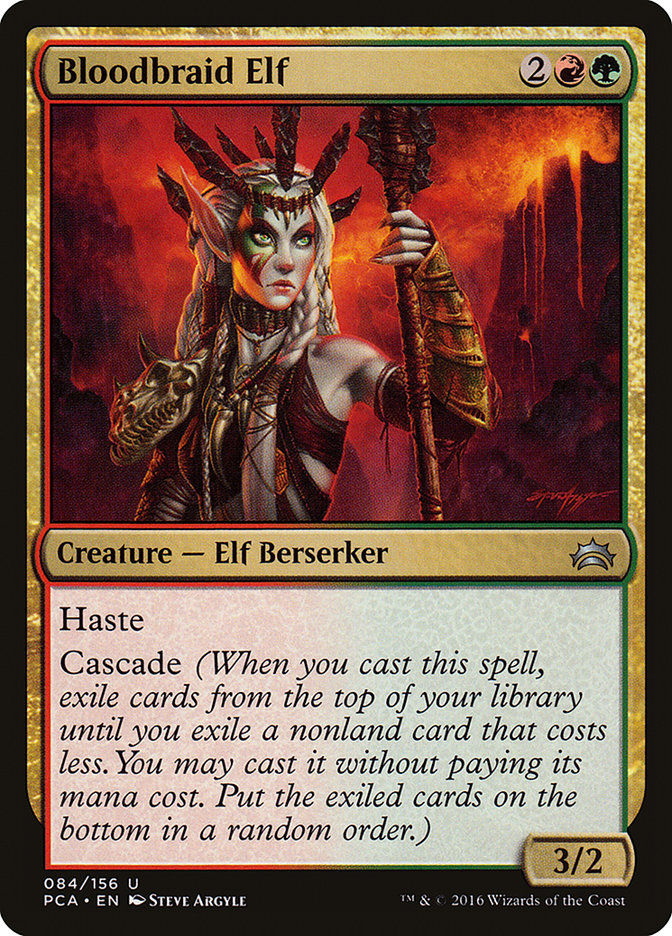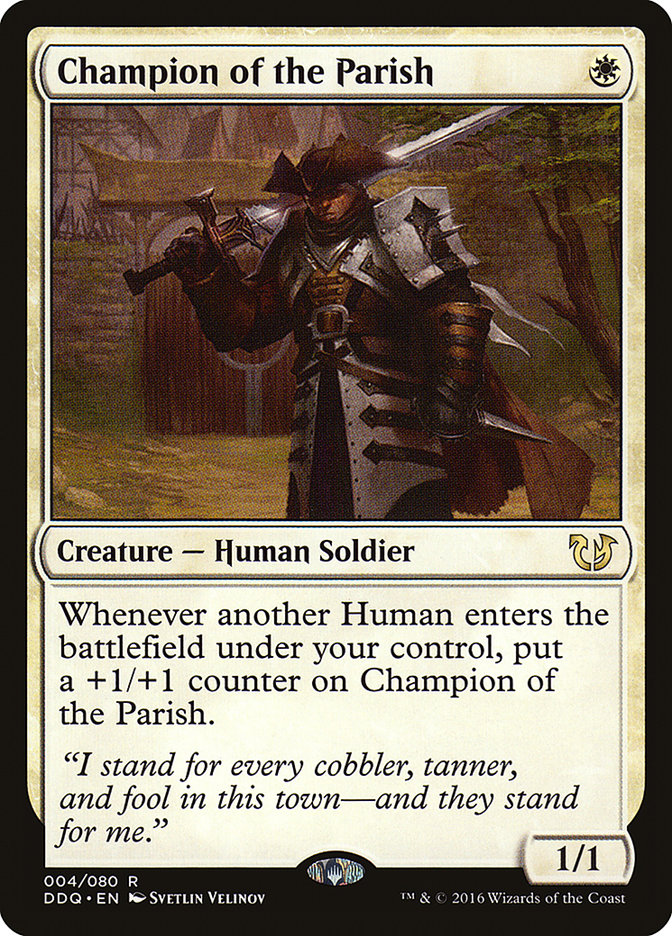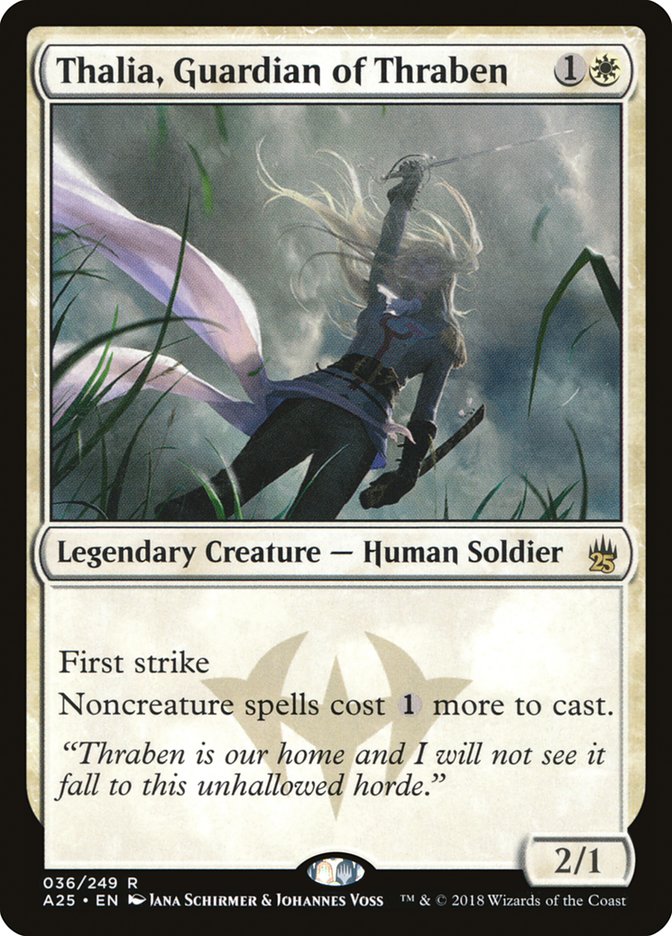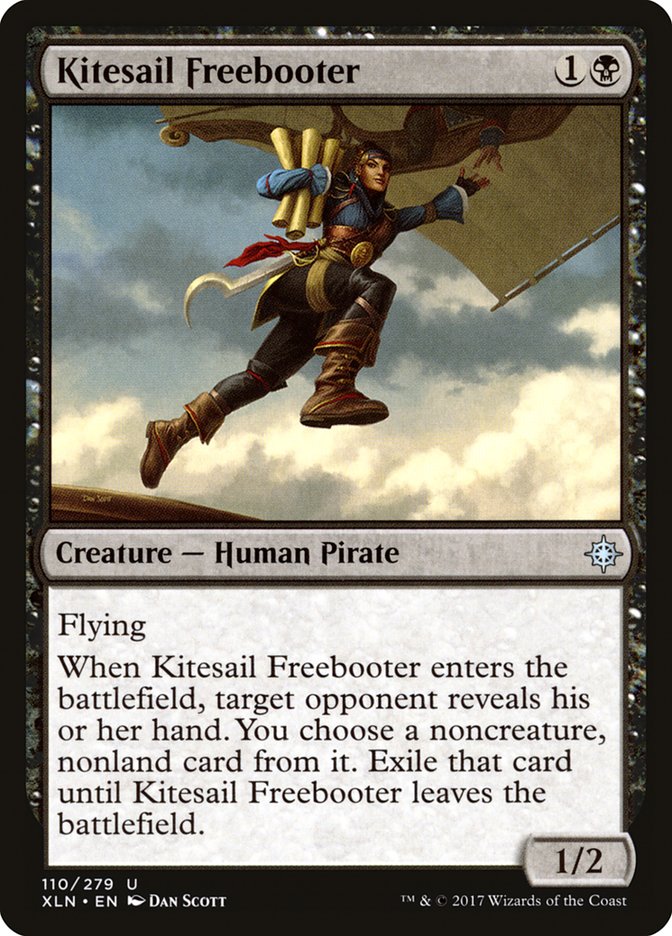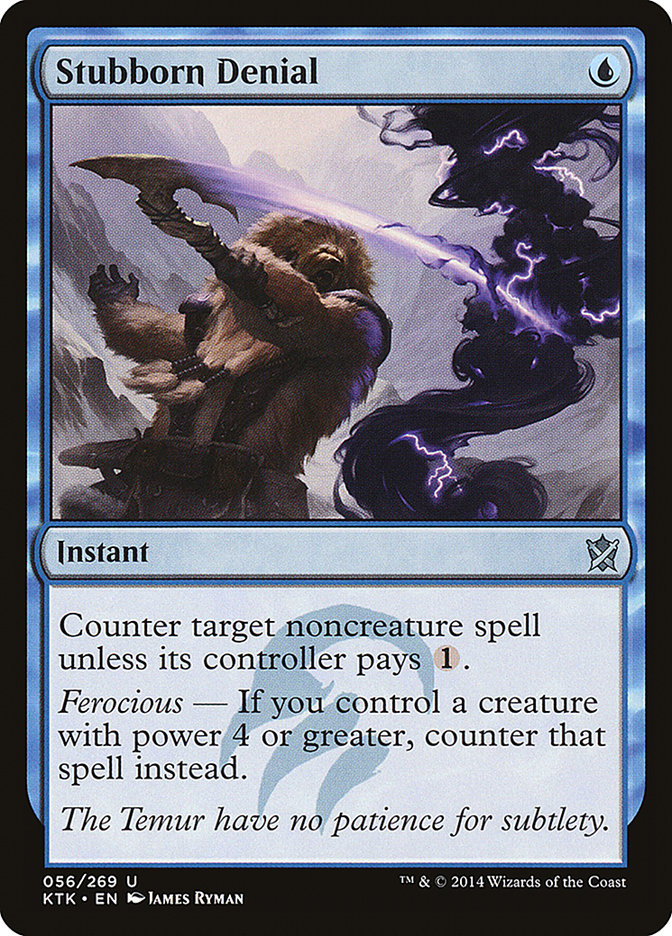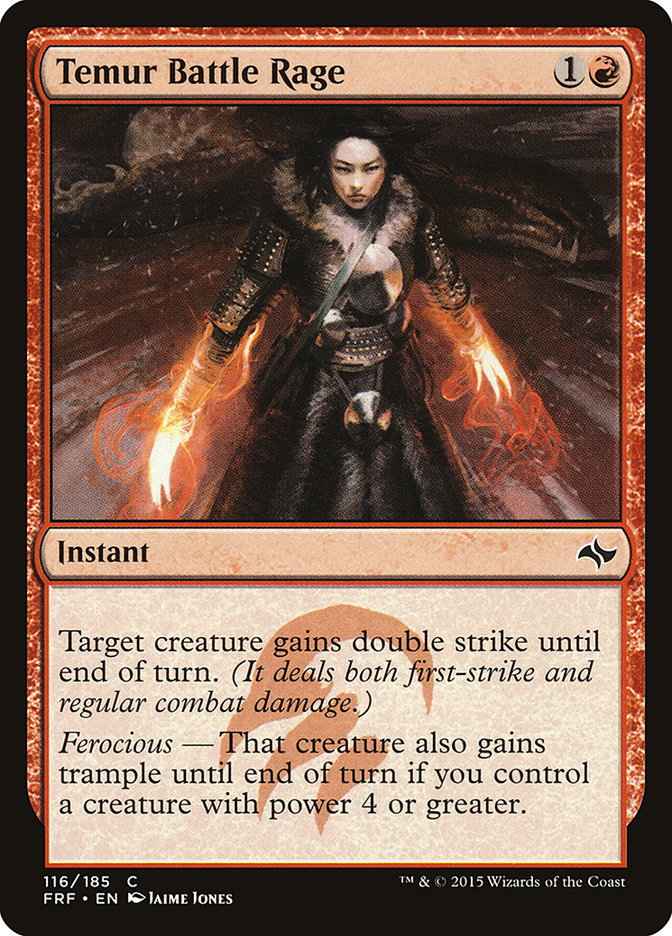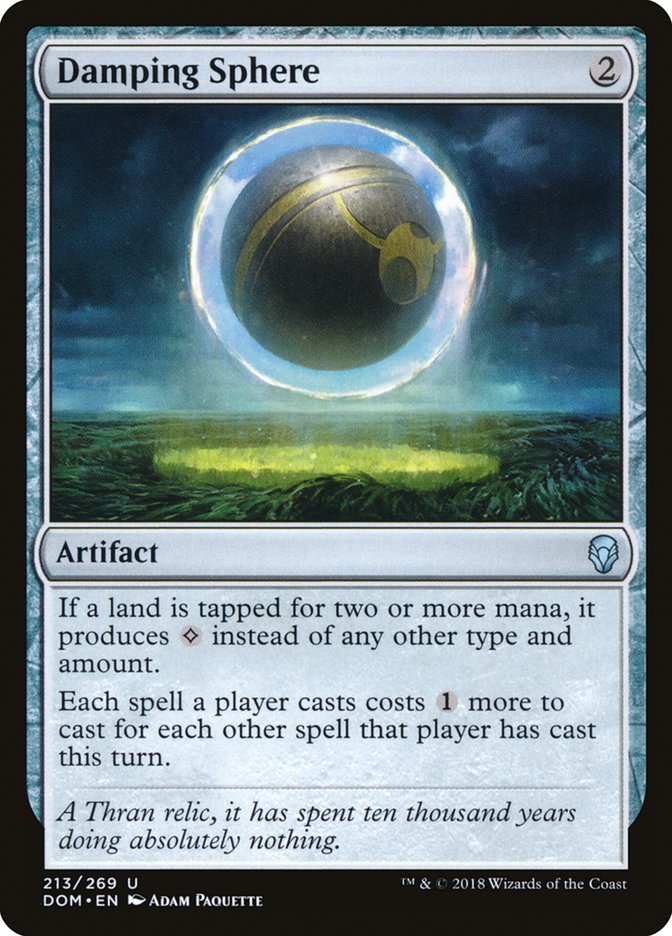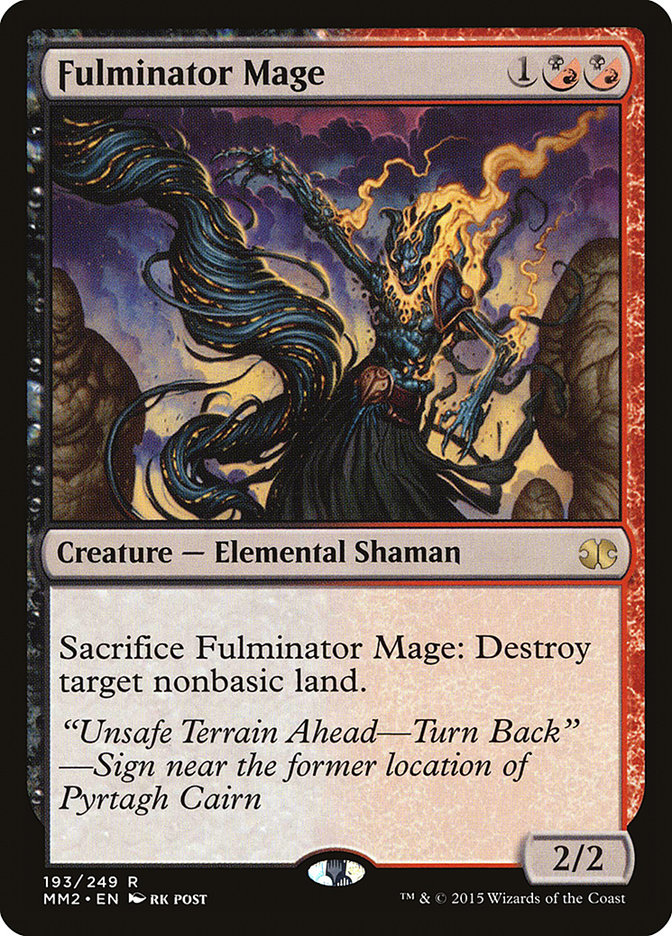Last week, our own
Emma Handy
wrote an excellent article with the bold title of ”
Play Humans Or Be Wrong.”
Her logic was sound and I wholeheartedly agreed with her conclusion:
Humans is the best deck in Modern right now. In spite of this, I chose to
be irresponsible and registered Jund at #SCGKY. I was
promptly rewarded with a top 8 berth. What gives?
Truth is, most of us are going to be wrong no matter what we do. It’s all
well and good to respect the fact that Humans is the best deck in the
format, but acting on that knowledge is another thing entirely. Your
opponents aren’t going to concede to you when you politely inform them that
you are playing the format’s best deck. You must have the skill to back up
your deck choice, and that’s not something you gain just by wanting it.
If you aren’t an extremely skilled Humans pilot, instead of getting to
choose whether to play Humans or be wrong you get to pick whether you want
to be wrong or be wrong, neither of which is particularly appealing. Thing
is, Magic is a complex enough game and Modern is certainly a deep enough
format for there to be different degrees of wrong possible. An average
performance with the best deck will always be worth less than an excellent
performance with a medium deck.
If you must be wrong, you should at least ensure that you’re wrong with style.
What Happened to Jund, Anyway?
I want to talk about how to best be wrong with Jund right now, but first we
need to discuss the elephant in the room: why are we even here? After
Bloodbraid Elf got unbanned, the whole world seemed convinced that Jund was
going to be a true contender among the best decks in Modern. I certainly
thought so and events sure did a good job of confirming the sentiment.
Jund was everywhere at the Magic Online Championship and managed to place
two copies into the top 4. I personally was so sure Jund was great that I
booked a last-minute flight to #SCGDFW to play a
Modern Open. That gamble paid off with a top 8 and I figured the whole “is
Jund a top tier deck” question was pretty much settled.
And then, nothing.
Jund stopped winning on Magic Online, and it stopped showing up to Day 2 in
paper events. #SCGMKE was the
next big individual Modern tournament, and in its 92-player Day 2 field,
only three were on Jund. The Jund hype died down as quickly as it started,
and the world moved on. Live by the Bloodbraid Elf, die by the Bloodbraid
Elf.
That last sentence wasn’t just poetry, Bloodbraid Elf was both the reason
that we all thought Jund was going to find its way back into the limelight
and the accepted culprit of its fall from power. Four mana, we decided, was
just too much for a fair card in Modern. Bloodbraid is slow and clunky, and
Modern has moved past that being acceptable.
I remember reading a
Gerry Thompson
article
from right before #SCGMKE in which
he correctly predicted the upcoming dismal performance of Jund. He gave a
list of top decks that Bloodbraid Elf was actively bad against, including
Humans, Hollow One, Tron, Affinity, Burn, and Storm. I disagreed with him
on every count besides Storm.
Worse, I thought Bloodbraid Elf was actively good in a lot of the matchups
he was claiming it was awful in. The difference between me thinking
Bloodbraid is fine against Burn while Gerry thinks it’s bad wasn’t that big
of a deal, but the difference between me thinking Bloodbraid is one of the
best cards against Humans while Gerry thinks it’s bad was troubling. I’m
confident in my Jund skills and analysis, but how confident can you be when
Gerry Thompson is saying you’re wrong?
At this point in time right after #SCGMKE I had a
decision to make: did I trust myself and play Jund at Grand Prix Hartford
despite the world losing confidence in it, or did I audible to Humans?
Given the time constraints at play, this wasn’t much of a decision. I
didn’t have time to learn Humans, so Jund it was. I took 16th place at the
Grand Prix with a 12-3 record in the swiss.
With my two forays into the Jund lifestyle since the unbanning of
Bloodbraid Elf both culminating in 12-3 finishes at high-level tournaments,
I decided I would just make the world prove to me that Jund wasn’t good.
Instead, it gave me a third 12-3 finish at #SCGKY. My
cumulative record across those three tournaments with byes removed is now
32-11, just a hair shy of a 75% win rate.
More importantly, along the way I think I’ve figured out the answer to the
Jund mystery of why I’m winning so much with the deck while it’s generally
regarded as not very good and why I like Bloodbraid Elf across virtually
the whole slate of matchups while others find it lackluster in many.
The Strength of Disruptive Aggro and Navigating Games with Jund
But now that I’ve got you invested in this Jund mystery, it’s time to take
a brief step back from it. Don’t worry, we’ll get back to Jund soon enough.
Before Humans was the de facto best deck in Modern, that honor belonged to
Grixis Death’s Shadow. On the surface, these two decks are very different.
One is a 37-creature Aether Vial monstrosity, the other is a Snapcaster
Mage deck. Beneath the surface, they are both what I would term disruptive
aggro decks.
It’s easy to see with Humans. The deck is very clearly a linear aggro deck
that’s looking to kill its opponent quickly while also allotting some of
its deck space towards slowing the opponent down. If playing a Meddling
Mage or a Kitesail Freebooter slows the enemy’s game plan down by just a
single turn, that’s often long enough for the Human army to close the game
out.
The disruption in Grixis Death Shadow is obvious. Thoughtseize, Stubborn
Denial, and Fatal Push cover nearly all your bases when it comes to
stopping what your opponent is doing, and Grixis Death’s Shadow plays
enough cantrips to ensure it finds the kind of disruption it needs when it
needs it. The aggression is harder to see, and Grixis is certainly less
aggressive than Humans, but it’s still aggressive in the sense that it
plans on killing its opponents before they can fully execute their game
plan.
I believe Modern is at a point where a disruptive aggro deck will always be
the best deck. There’s just so many different unfair strategies in the
format. The unfair decks all have their own rock-paper-scissors
relationships and it’s very difficult to claim one as better than the rest.
If one ever did clearly become just a full turn faster than everything
else, I would expect it to not be in the format for long. Similarly, if a
pure aggressive deck with no disruptive elements ever became powerful
enough to just overrun the format, I wouldn’t expect it to stick around.
Pure disruption, also known as control, won’t work either, as it’s just too
hard to keep all the different unfair decks down for prolonged periods of
time. Disruptive aggro decks do it by disrupting every deck a little since
they just need to buy a few turns, but control decks need to buy a lot of turns and that can’t be done against all the unfair decks
simultaneously.
Humans is the best disruptive aggro deck because its disruptive elements
are solidly good enough, and its aggressive elements are phenomenal. Where
Grixis Death’s Shadow had to split its disruptive focus to be able to buy
extra turns against both the unfair decks and the aggressive decks, Humans
only has to worry about disrupting the unfair decks because its aggressive
plan simply outclasses that of all the fair decks.
To bring all this back to where we started: Jund is a disruptive aggro
deck. Like Grixis, it must split its focus between disrupting unfair decks
and disrupting more aggressive decks. Unlike Grixis, it doesn’t get to play
any card selection to help it find the right disruptive pieces for the
match at hand. Jund is completely dependent on the cards it draws, and that
is its big weakness.
The strength of Jund is that on their own merits, its cards are better than
everyone else’s. It’s the premier anti-synergy deck, just trying to trade
card-for-card until its Tarmogoyfs look good rather than embarrassing. If I
was given the option to have both my opponent and I start on five cards
every game, I would expect my win rate to skyrocket.
Because of this, Jund leans hard on hand disruption. It doesn’t matter so
much which cards the opponent loses, as long as they lose so many that they
can’t bring their synergies online. The problem with this plan is that
discard only does anything for as long as the opponent has cards left in
their hand.
These days, every deck can rebuild from nothing. The ability of Tron to
beat you while playing off the top has always been the reason Jund was so
bad in that matchup, but now every unfair deck is able to do that. Even
Storm, the quintessential high resource combo deck, is more than capable of
assembling a kill off the top with as few as six lands. Thoughtseize and
Inquisition of Kozilek have just been around too long, and every deck now
comes prepared to win low resource games.
The moral of this story is that current era Jund needs to focus on its
aggression, because its disruption just isn’t as good as it once was. I
play Jund very aggressively, always trying to turn the corner against decks
like Humans and Affinity as soon as possible. I know I don’t have forever,
that sooner or later I’ll run out of removal spells and their synergies
will start to pile up and become unstoppable. I need to win before that
happens.
And that’s why I like Bloodbraid Elf so much. A 3/2 haste for four isn’t
impressive, but it does bring the heat. If you’re already in the process of
turning the corner, three more damage is a welcome sight. The trick to the
card isn’t navigating games to points where every cascade is live, it’s
navigating it to points where as many cascades as possible either take a
turn off your clock or buy you a turn’s worth of disruption.
The game of Magic is about killing your opponent before they kill you, and
nowhere is that as obvious as in Modern. In Standard you often end up in a
game that more closely resembles tug-of-war, fighting for battlefield
control. In Modern, the two decks will want to accomplish two very
different things and you won’t see that tug-of-war style game play. It’s
more like a game of Mario Kart, where you only bother noticing your
opponent long enough to throw a banana in their path.
Playing Jund is a delicate balancing act. You must match your level of
aggression with the level of disruption that you happen to draw, with the
understanding that eventually, no matter how well you draw, you will be
overpowered. Your goal is to end the game before that point is reached, and
that often involves taking some risks. You’ll find yourself trading damage
against Affinity or Humans and not taking a strict control role to the
matchup because you know if you don’t you risk losing to a Mantis Rider or
Cranial Plating off the top in a few turns.
To summarize: Play Jund more assertively and more aggressively and it will
perform better for you. Current Jund doesn’t play all that much like Jund
used to, largely because the format doesn’t allow for nearly as many turns
to pass before every deck in the format becomes insulated from hand
disruption. You must be attacking.
Given the correct approach to playing Jund, is it good? It’s fine.
I wouldn’t recommend it to anyone looking to pick up a new deck, but if
you’re familiar with the deck and don’t want to switch, I don’t think
you’re making a heinous mistake. The power level of the deck just isn’t
very high, and as a result the deck is not forgiving of errors, but it’s
certainly capable of winning plenty of matches.
Assorted Notes On the Jund Build
I’m going to close this out by talking about some of the cards I chose to
play last weekend, but first I want to briefly go over a Dominaria
card I pointedly chose not to play:
Don’t play this card. Yes, Tron’s an awful matchup. Yes, Fulminator Mage
isn’t nearly enough to guarantee you a win in the matchup. Yes, your Storm
matchup is nowhere near good enough that you’d turn down extra help if it
were free. You still shouldn’t play this card.
Here’s the thing: Fulminator Mage isn’t for Tron. It’s your best tool
against Tron, but that wouldn’t be enough to play three copies. It’s your
best tool against Primeval Titan decks too, but that also wouldn’t be
enough. You need Fulminator Mage to fight Celestial Colonnade decks, and
all of those things together is enough to make Fulminator Mage
indispensable.
Alright, enough about Damping Sphere. For reference, here’s the list I
played at #SCGKY:
Creatures (14)
Planeswalkers (4)
Lands (25)
Spells (17)

I think my biggest departure from stock Jund is the lack of a fourth Dark
Confidant in my list. Basically, I think playing four copies of both Dark
Confidant and Bloodbraid Elf leaves you with a hair too many cards that
don’t affect the game state in a reliable and immediate way. If you draw
too many copies of those cards together, you can fall too far behind an
early push from your opponent.
Of the two, I find that drawing multiple copies of Dark Confidant is much
worse than drawing multiple copies of Bloodbraid Elf, and so have chosen to
cut a copy of Dark Confidant. The other Jund player in the top 8 of #SCGKY, Jessy
Hefner, chose to trim the fourth Bloodbraid Elf instead, and that’s also a
valid possibility. The neat thing about going down to three Bloodbraids is
that it makes playing 24 lands a real option, so if you’re interested in
playing less lands, switching my Dark Confidant and Bloodbraid numbers is a
good place to start.
Past the missing Confidant, the rest of my main is stock and I’m completely
happy with it. The cards in the sideboard I’m the least confident in are
the third Collective Brutality, the Damnation, and the Thoughtseize. All
have their uses, but if there’s anything you desperately want to try out,
that’s where I’d look to make room.
I know this article was heavy on theory and light on specifics, but I truly
think the biggest thing most players can do to get better at Jund is to
adjust their approach to playing the deck. However, if you have any
specific questions about Jund or the list I played, I’m happy to answer
them.


